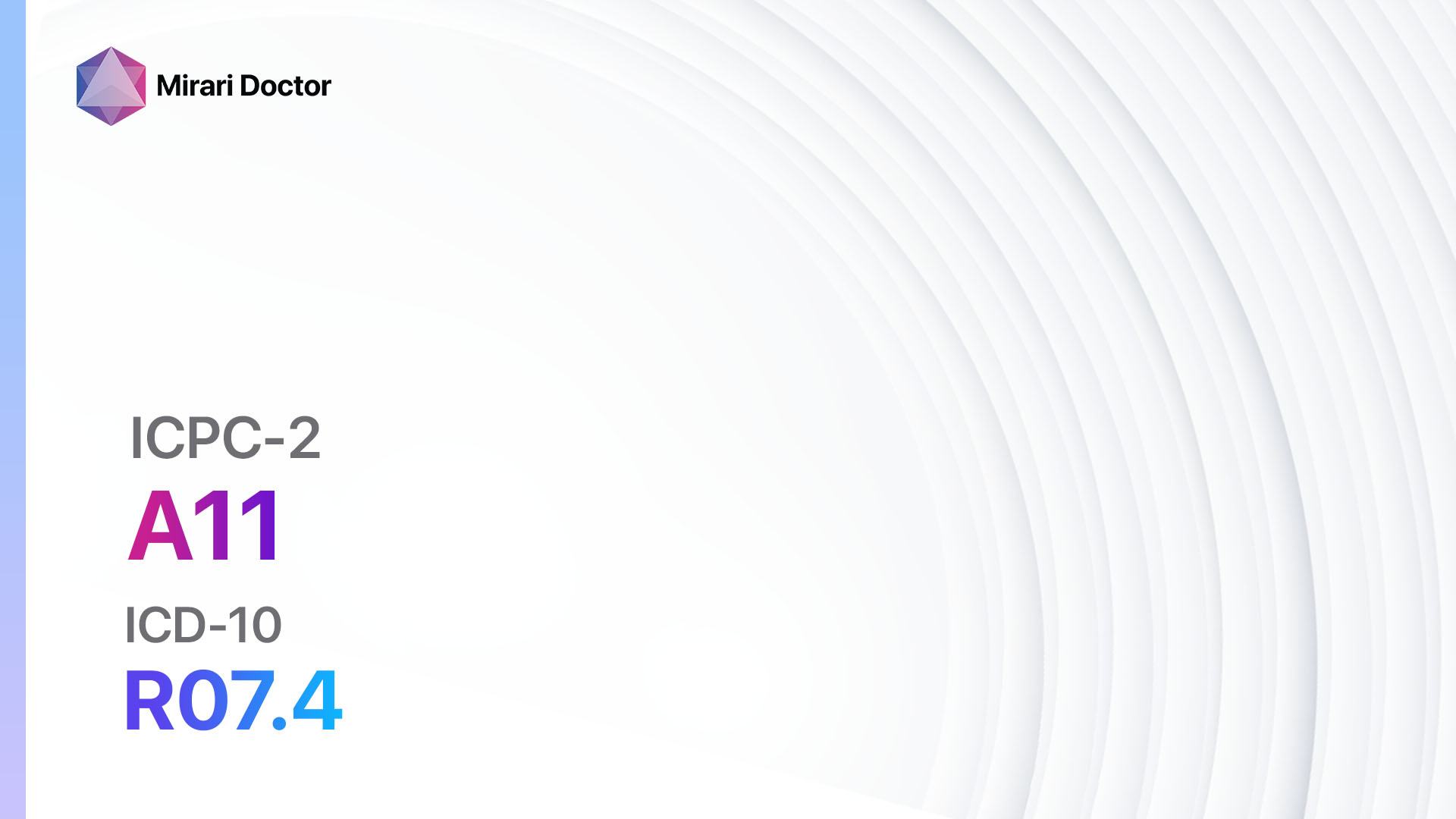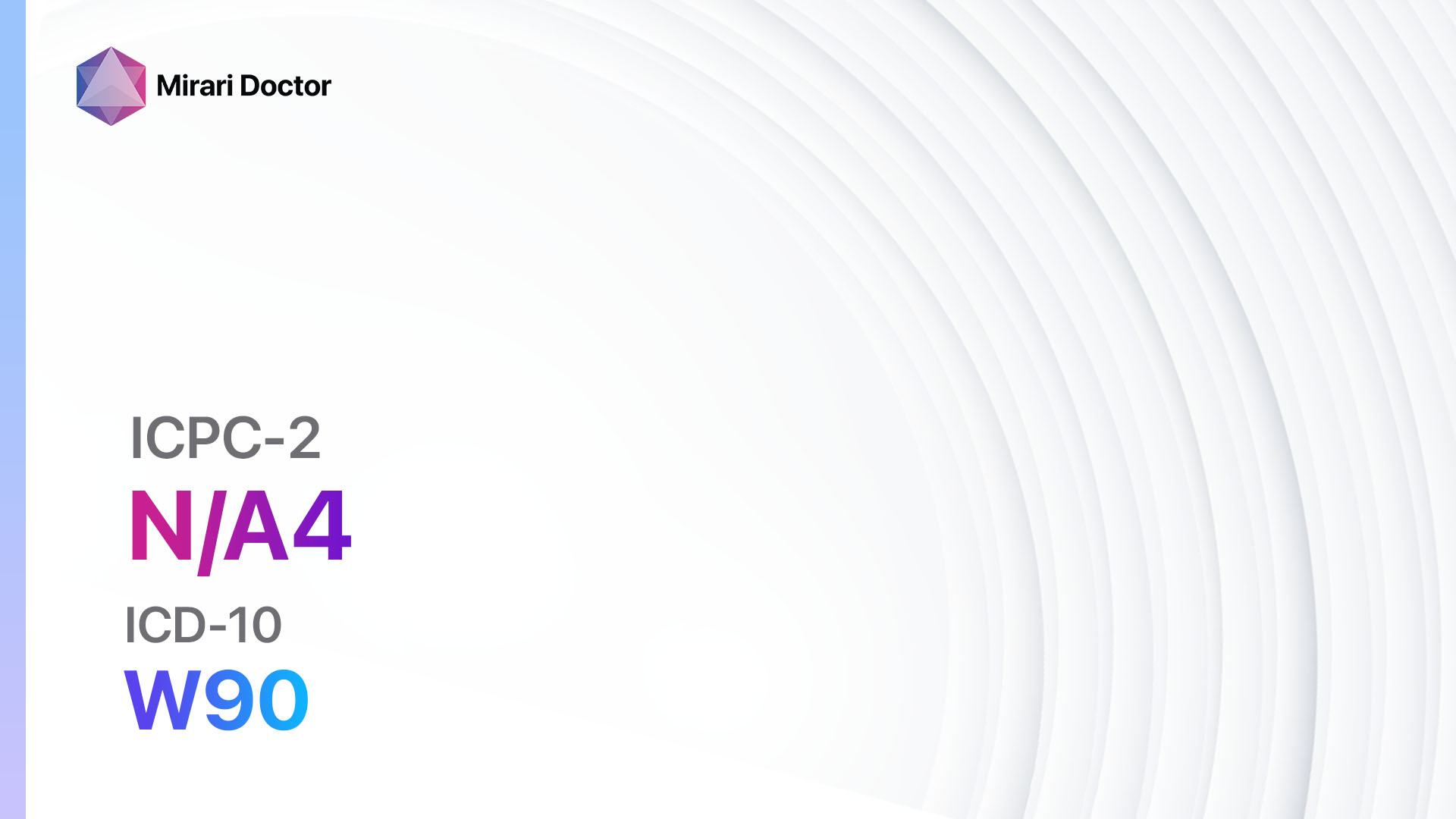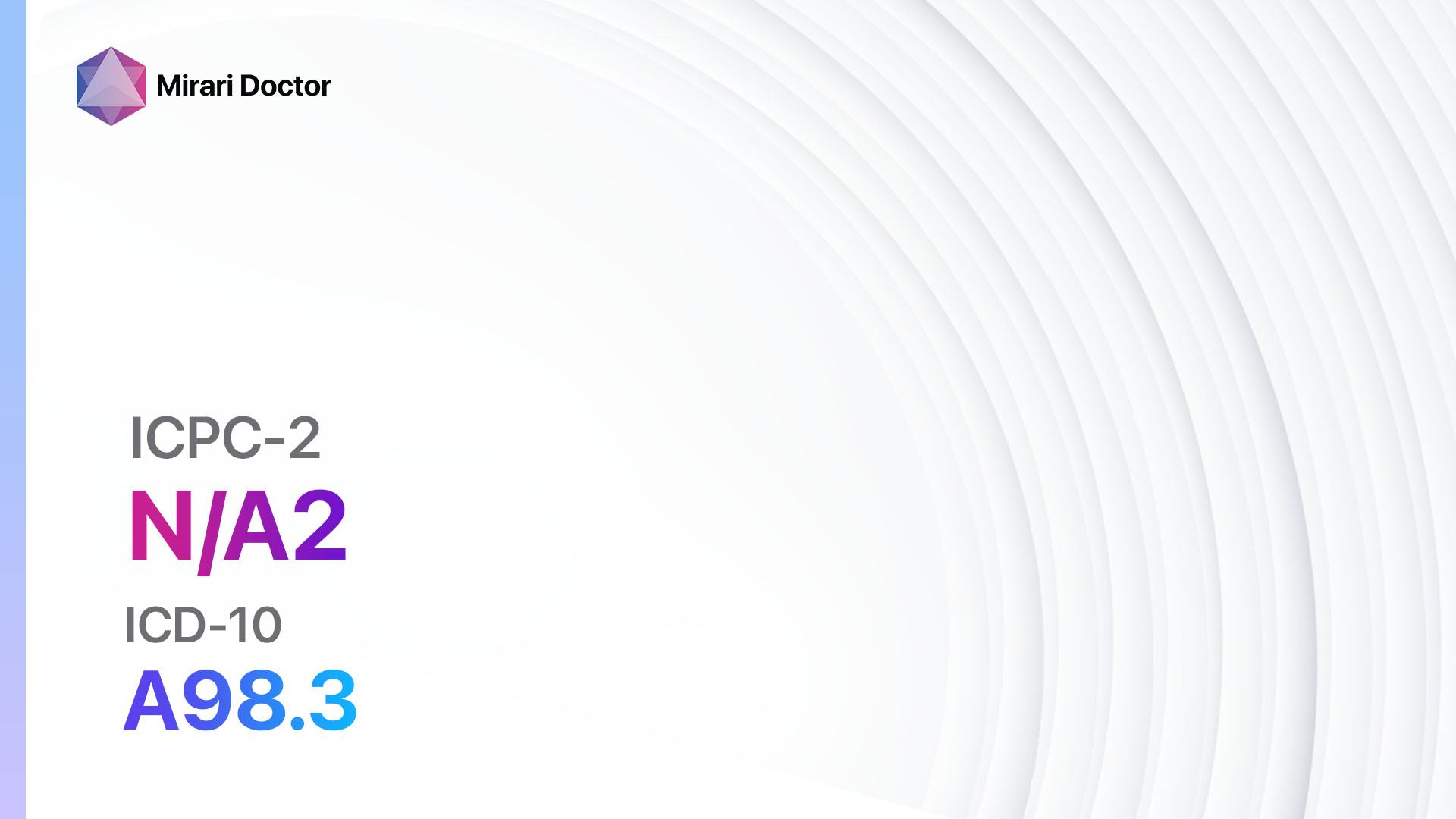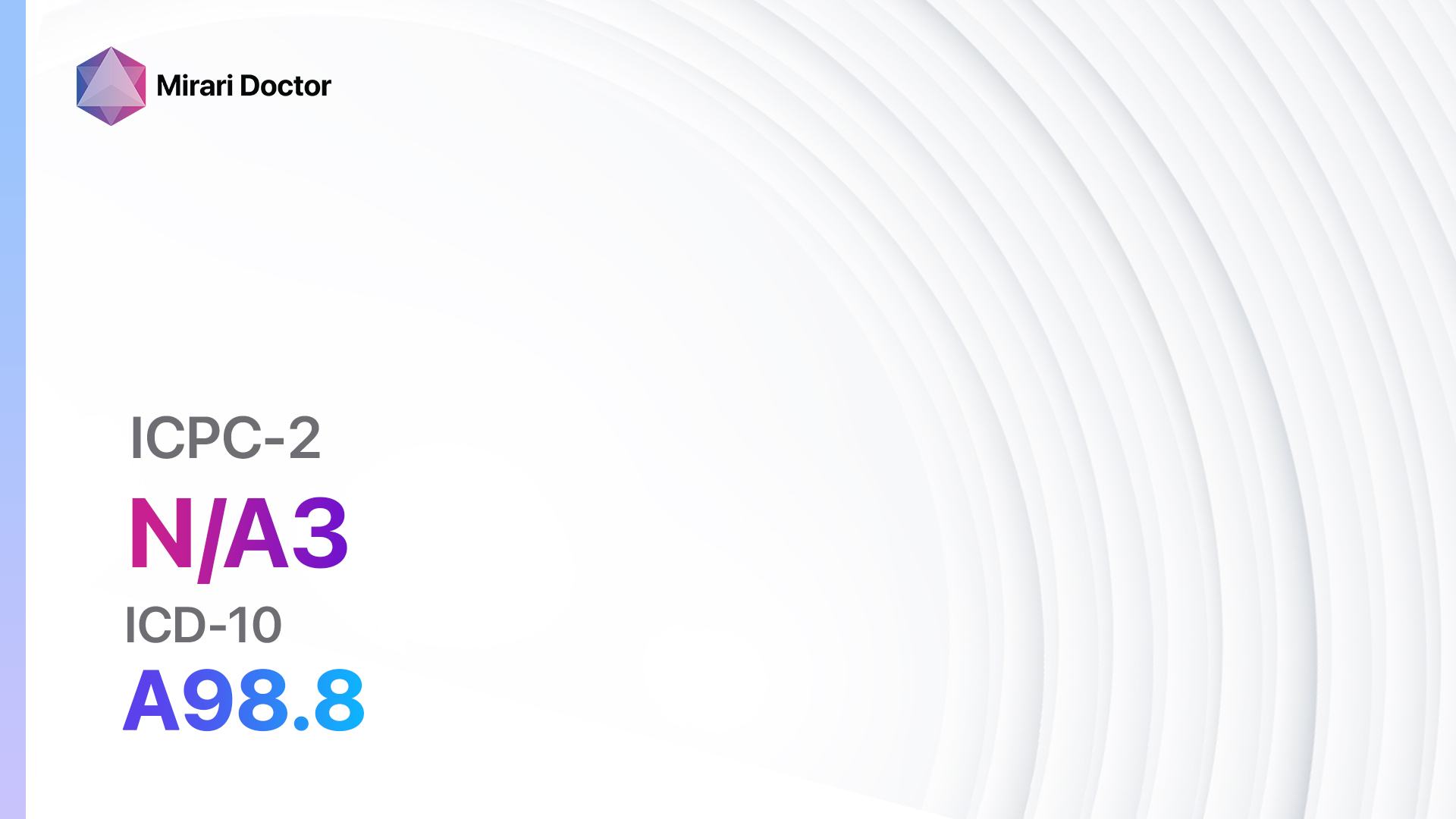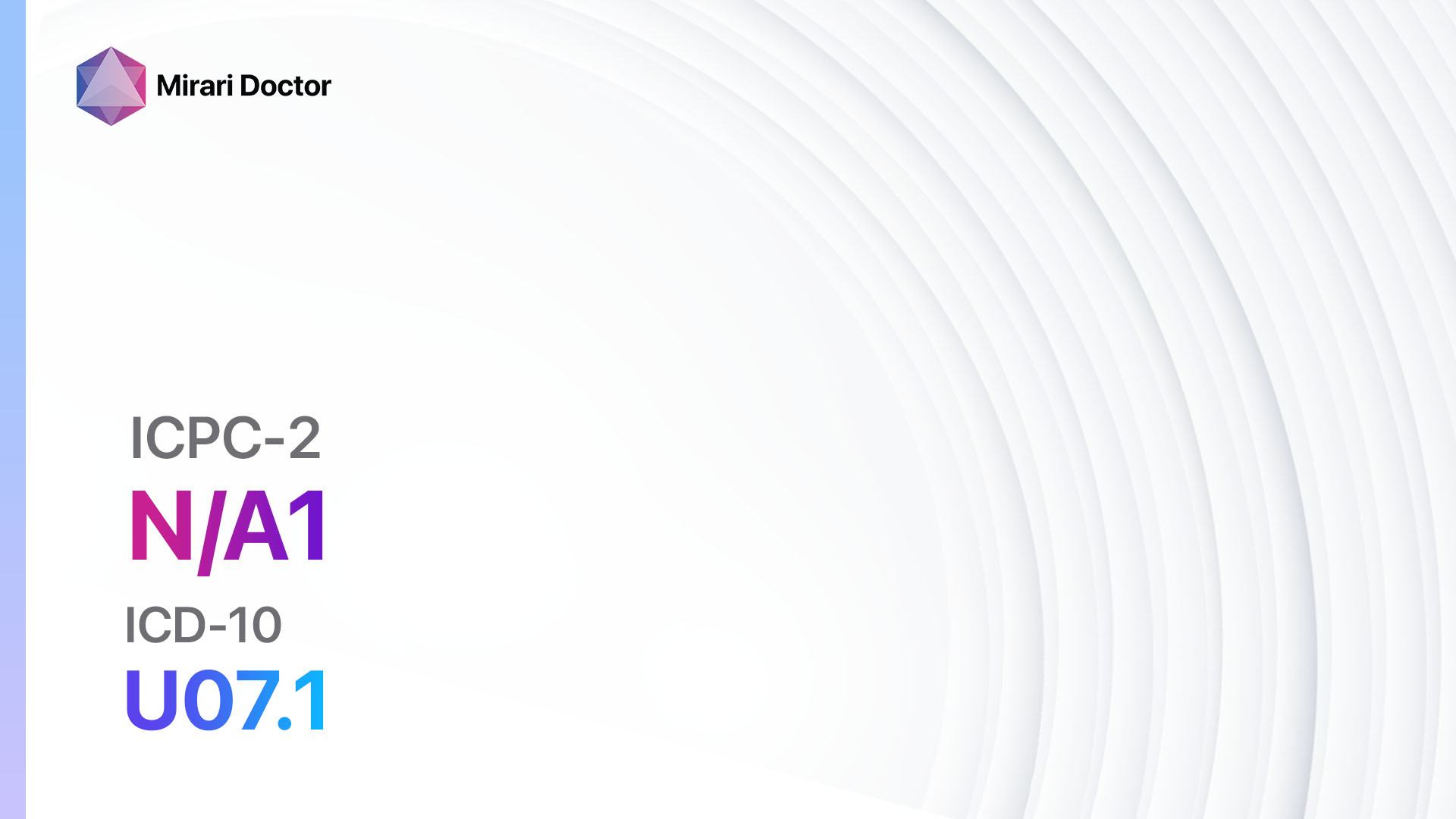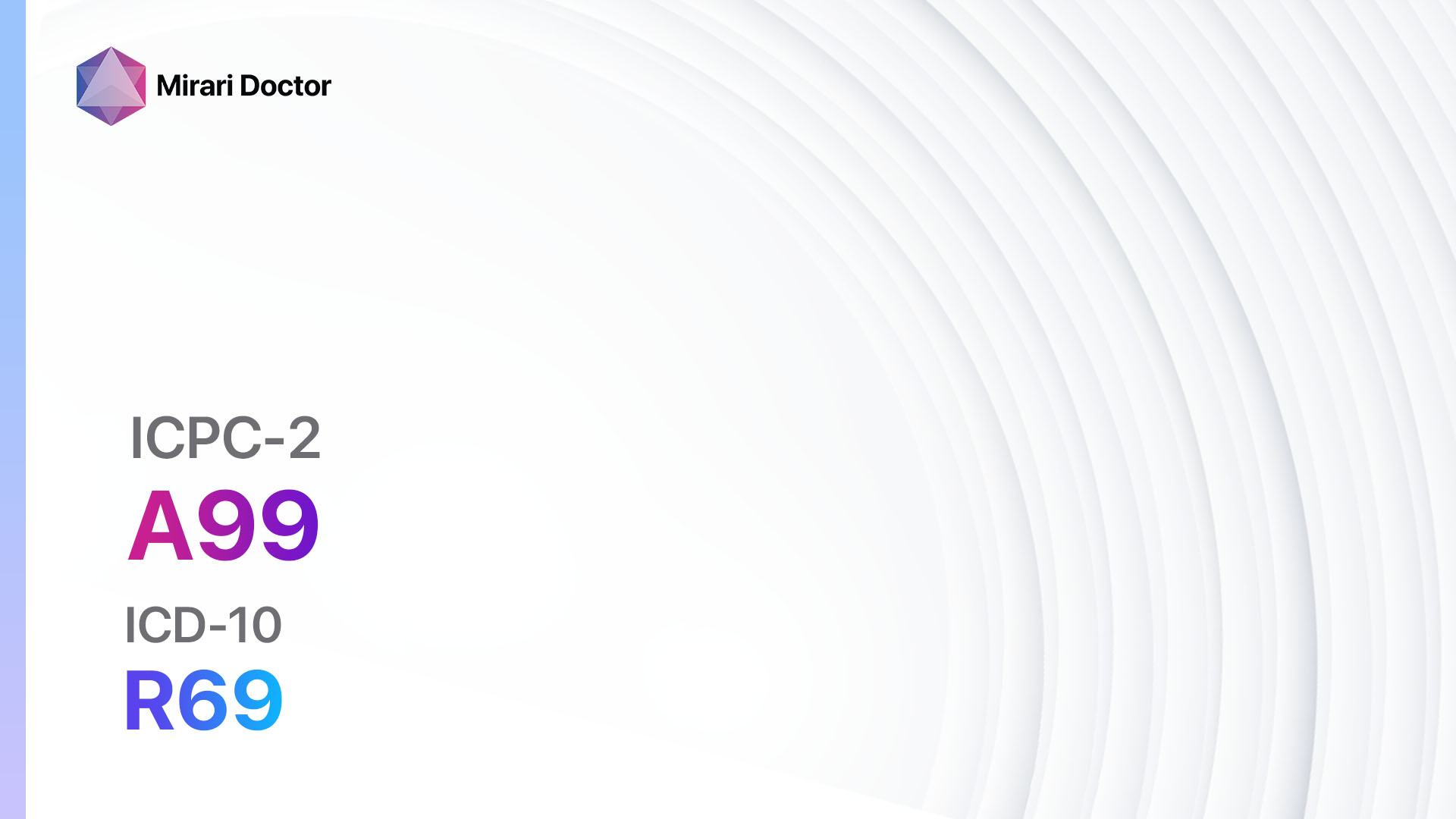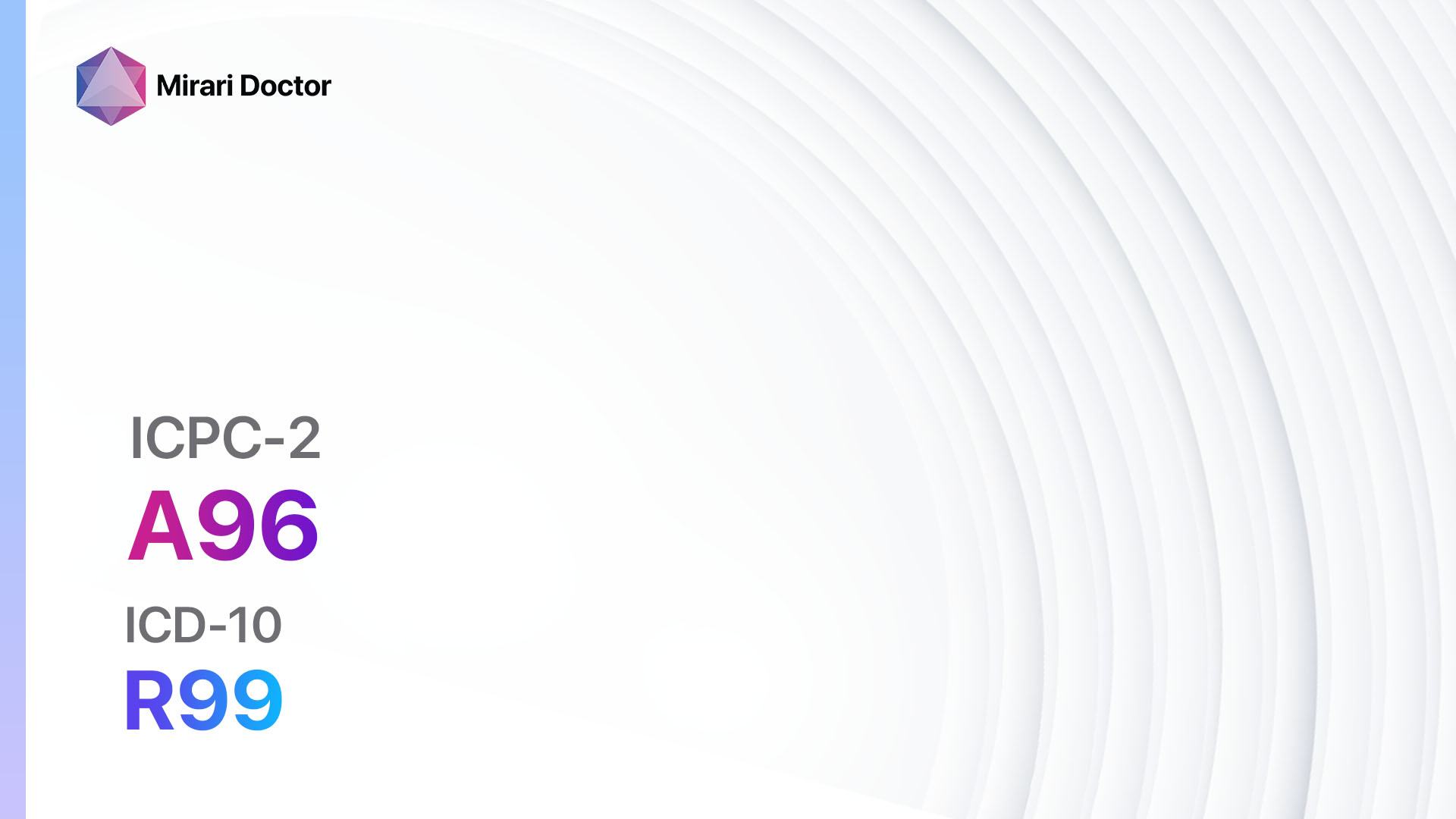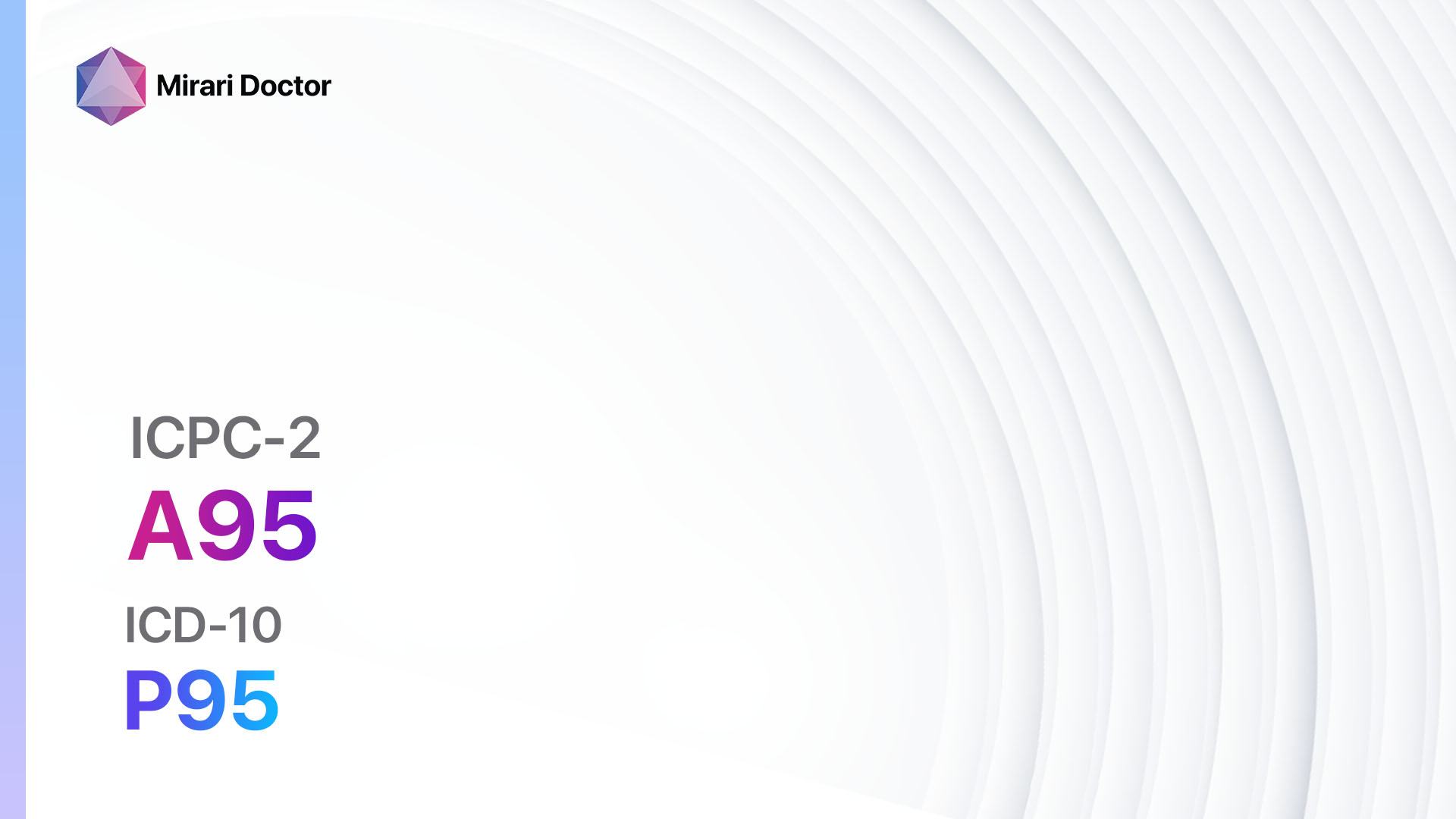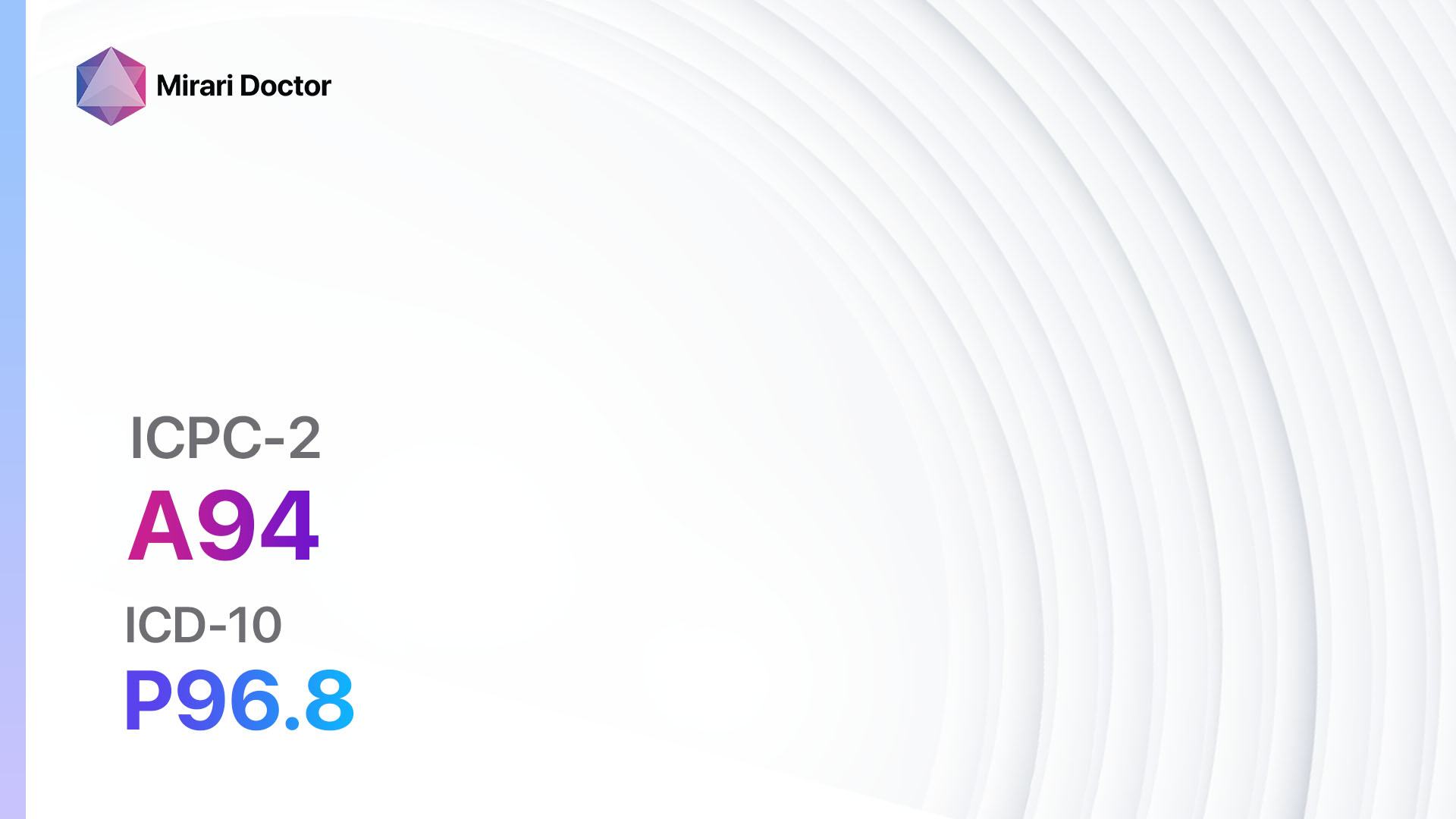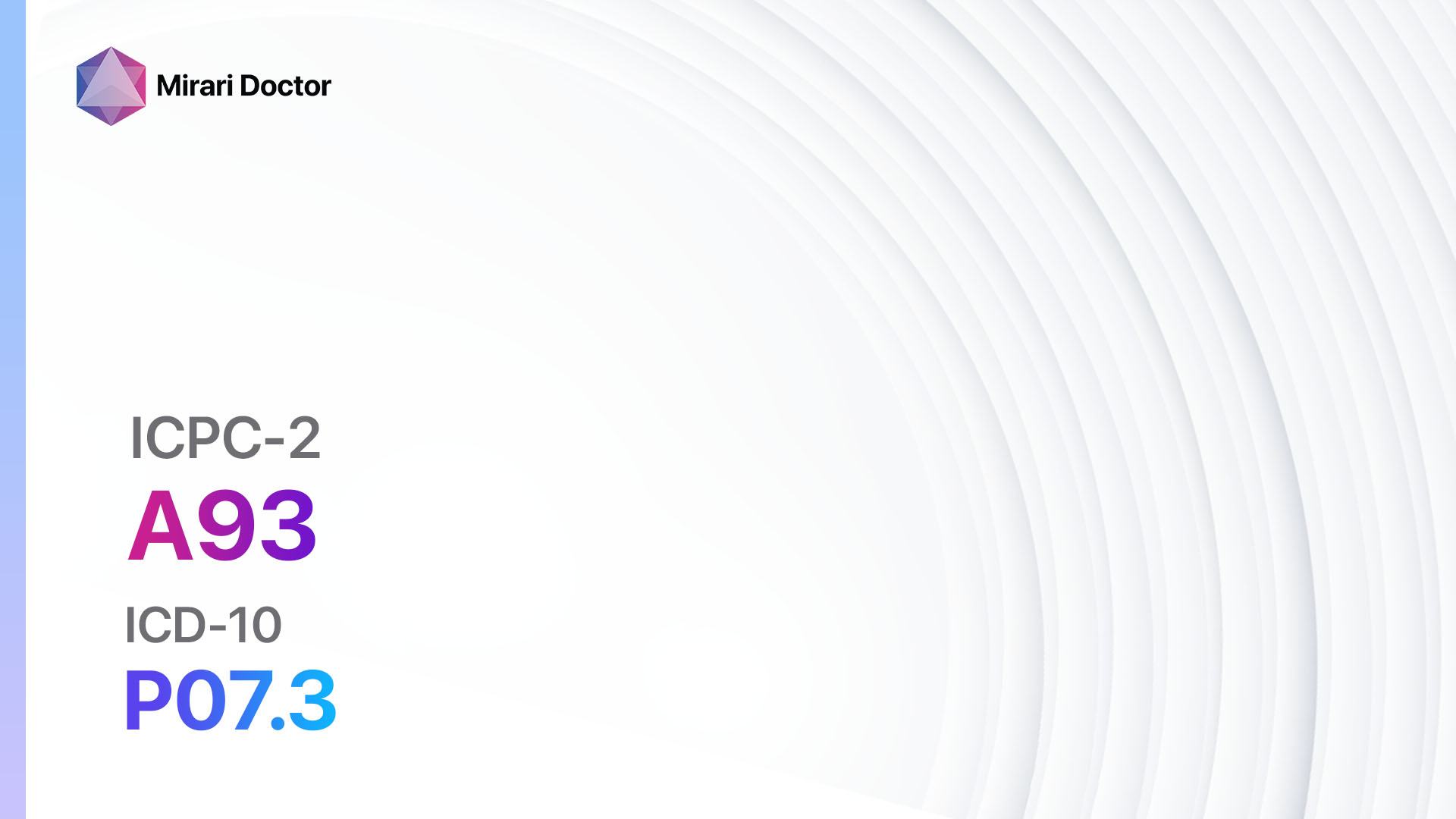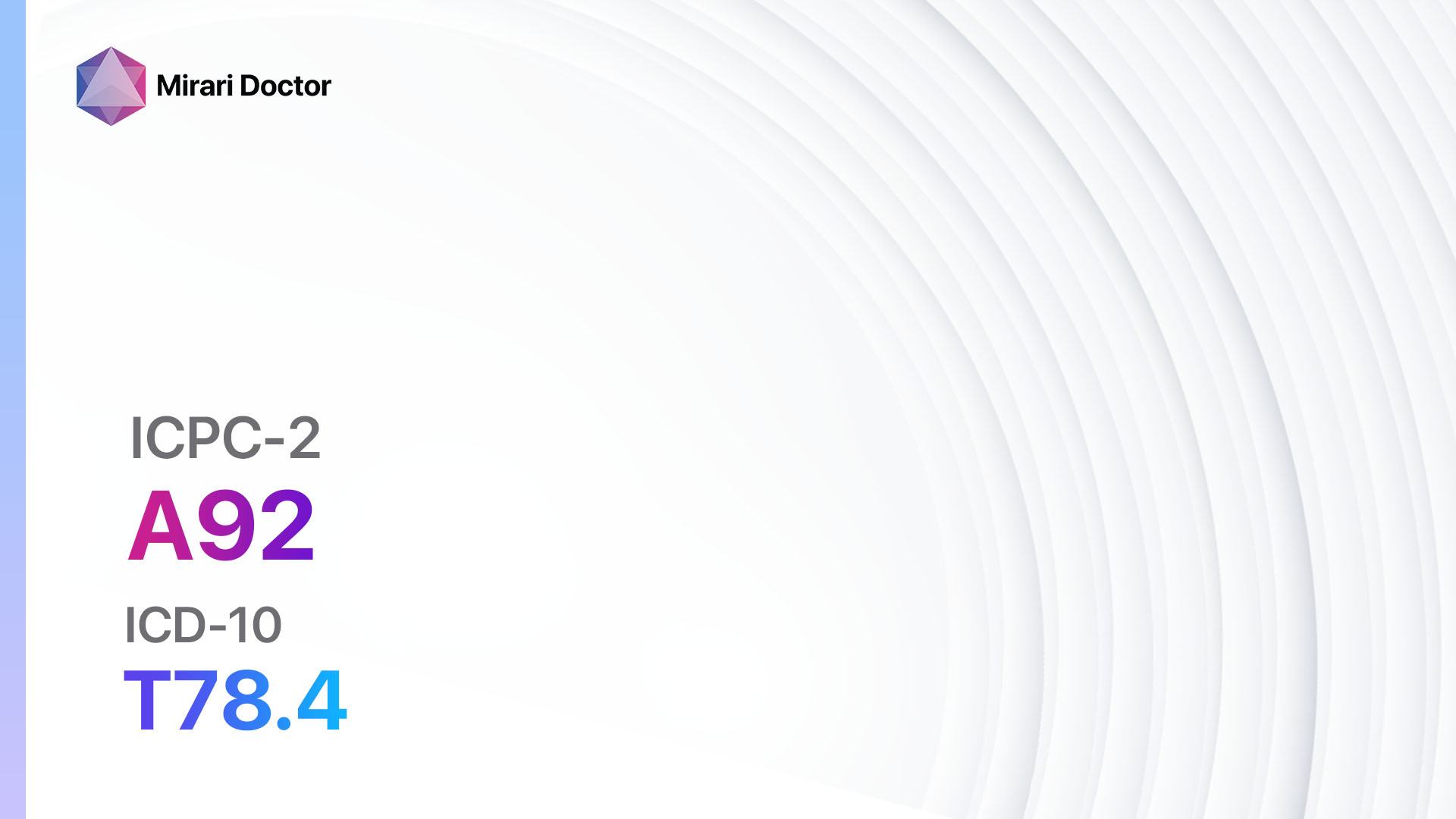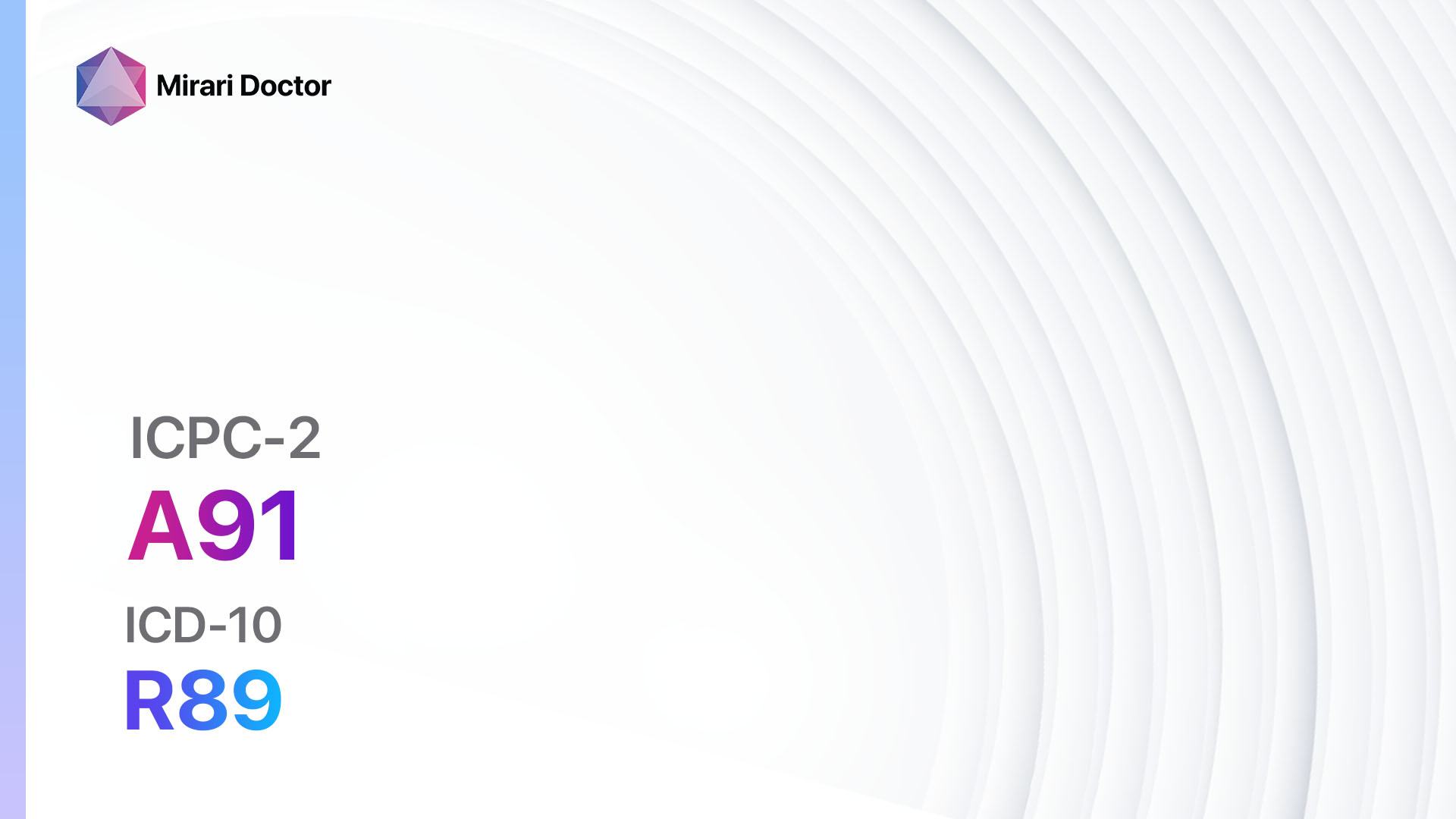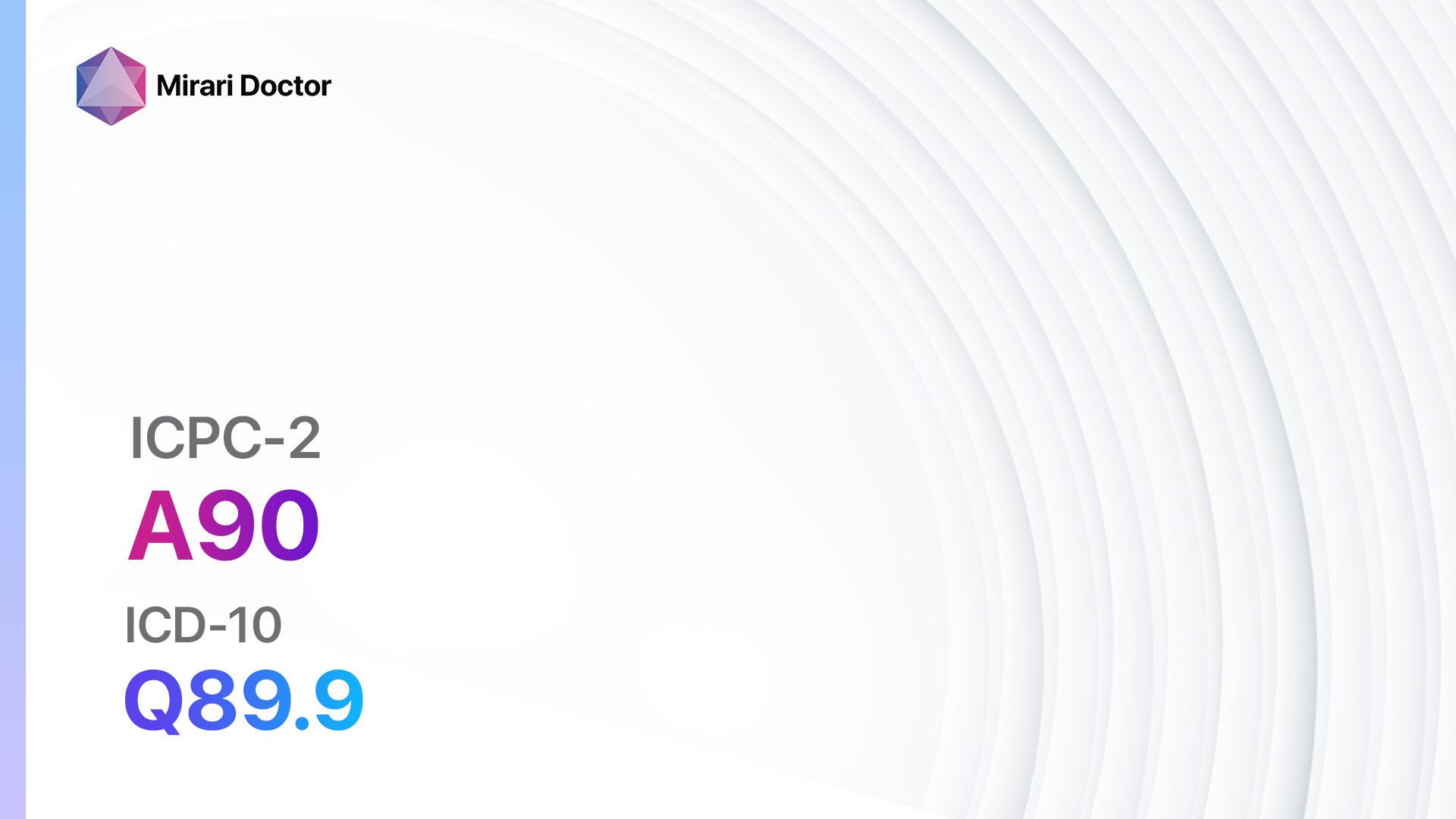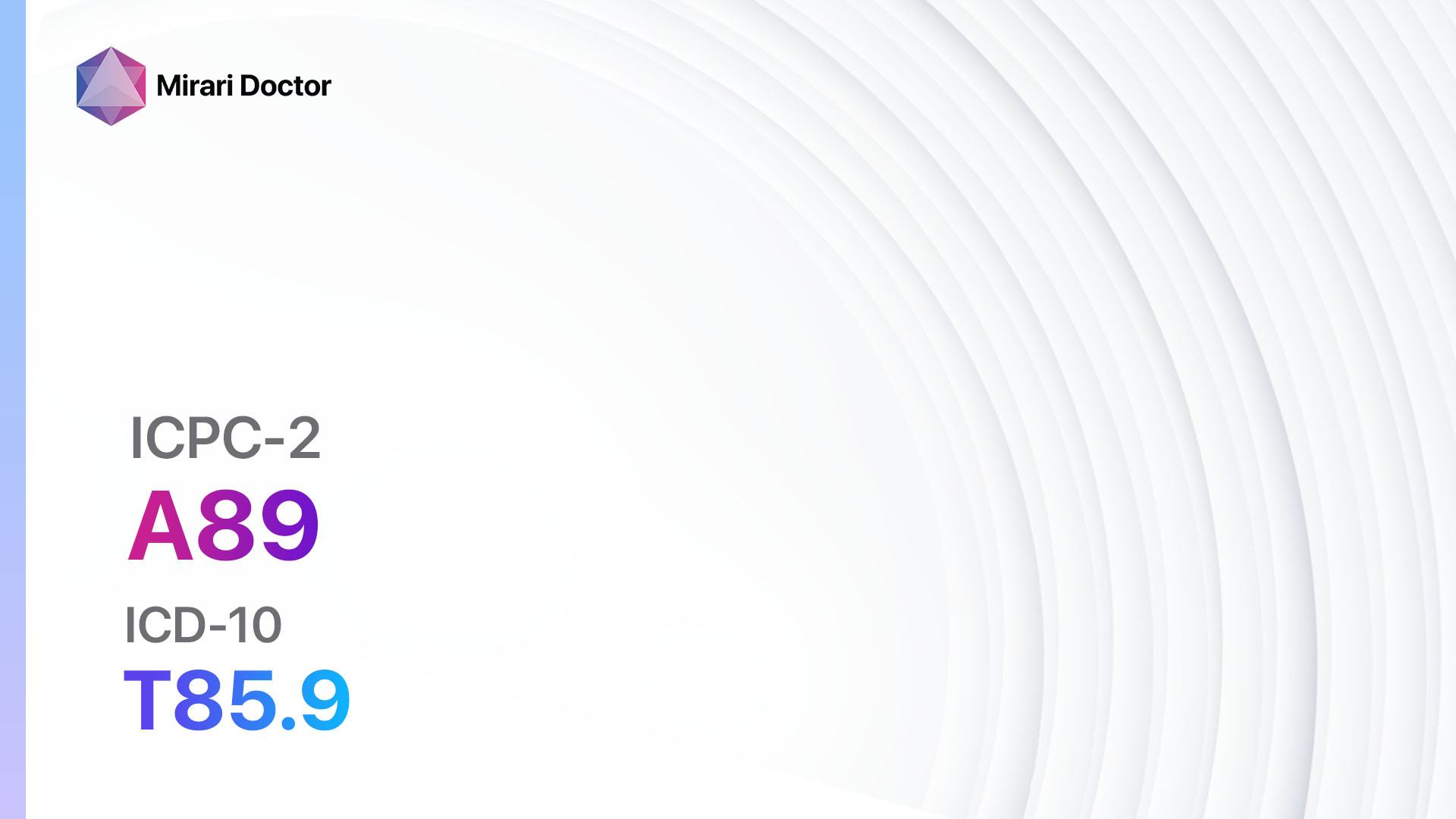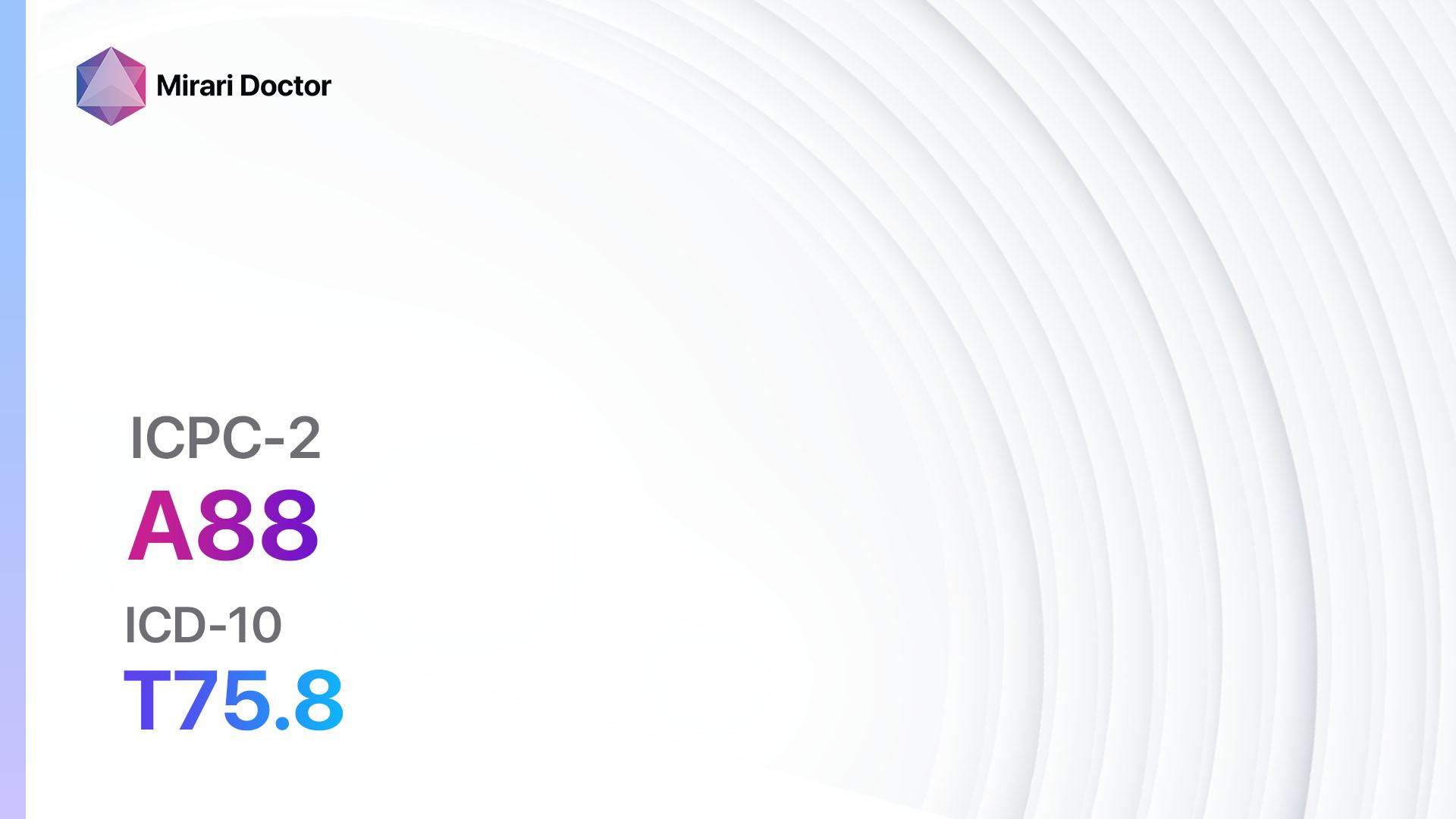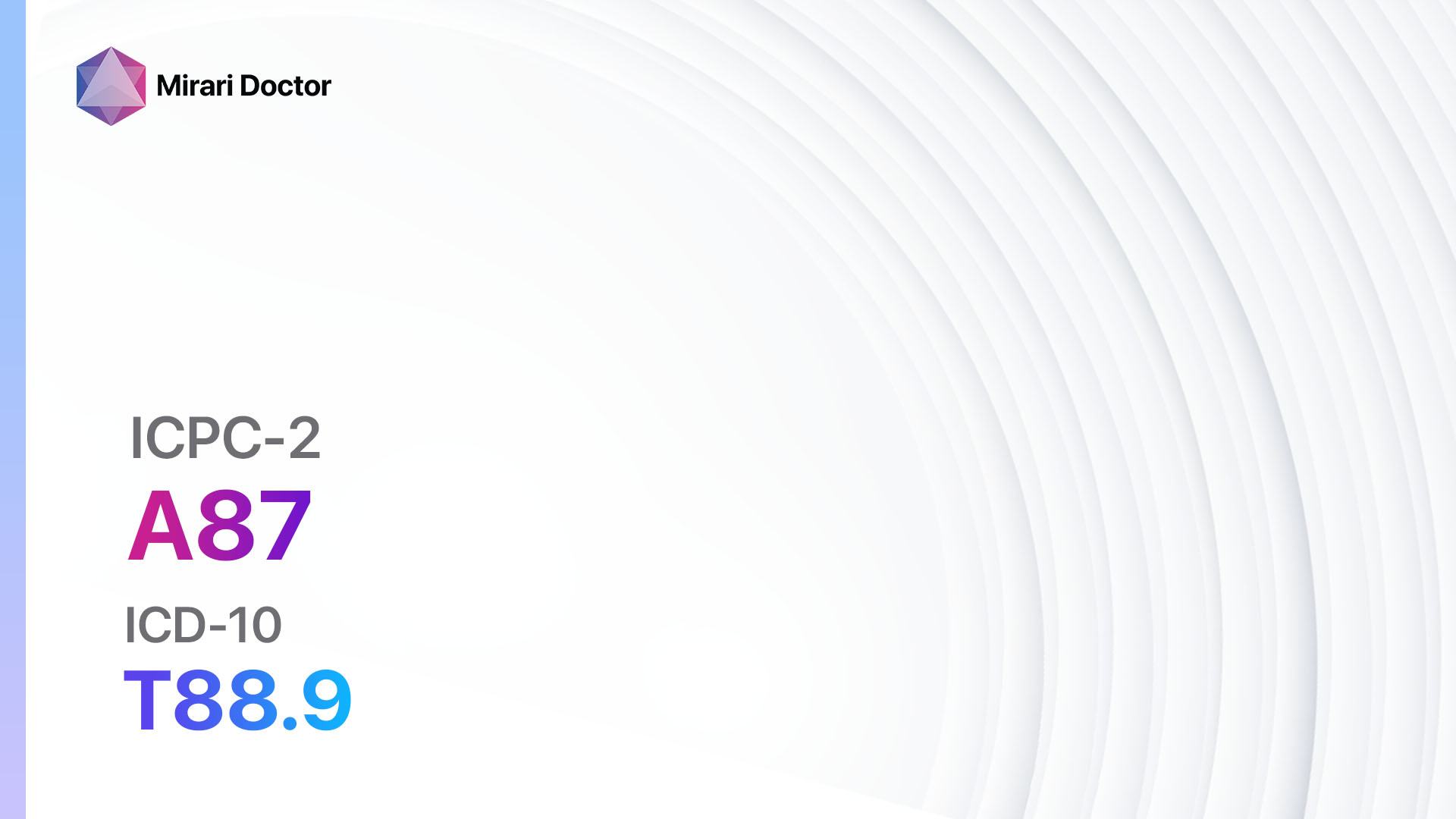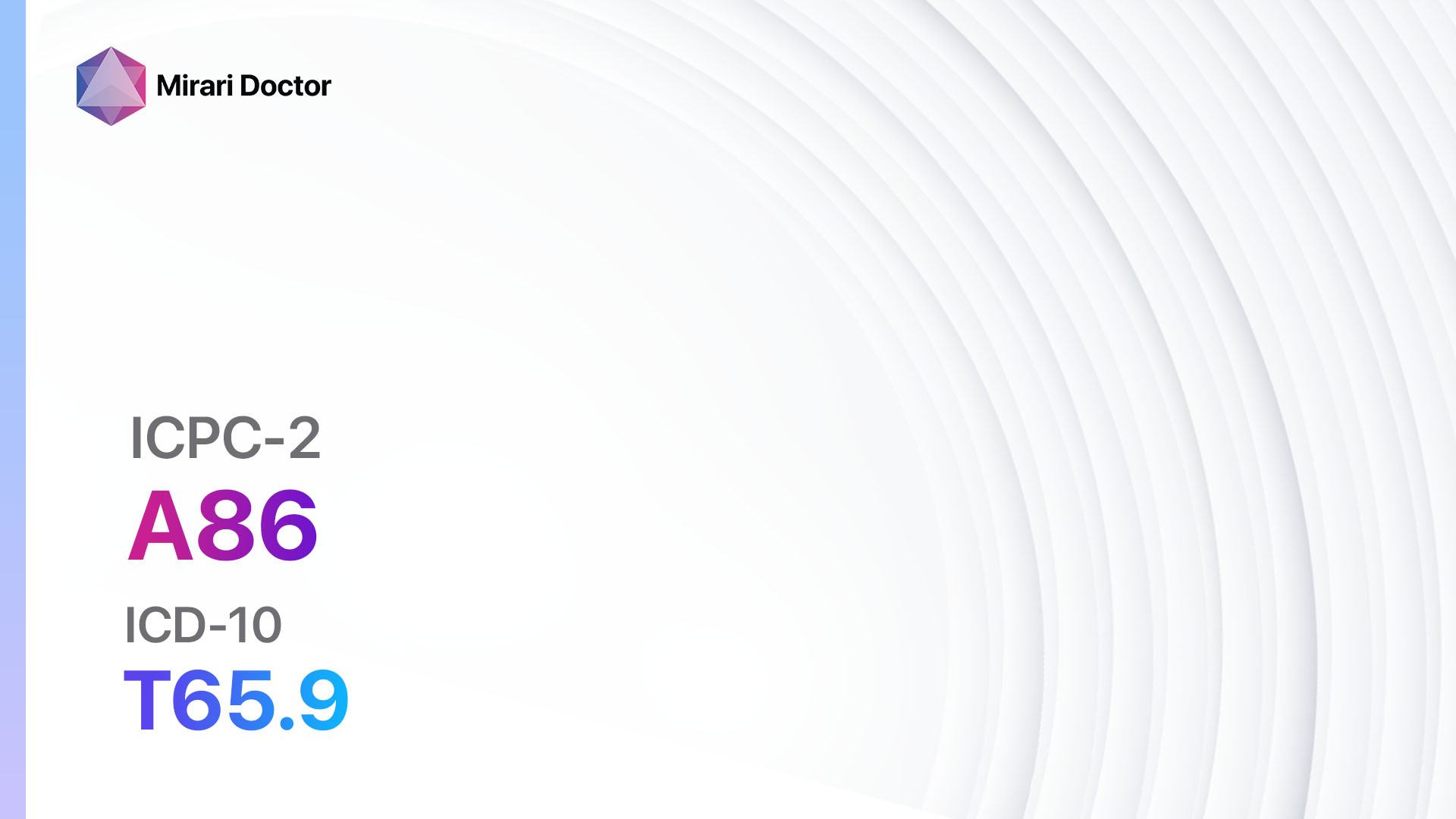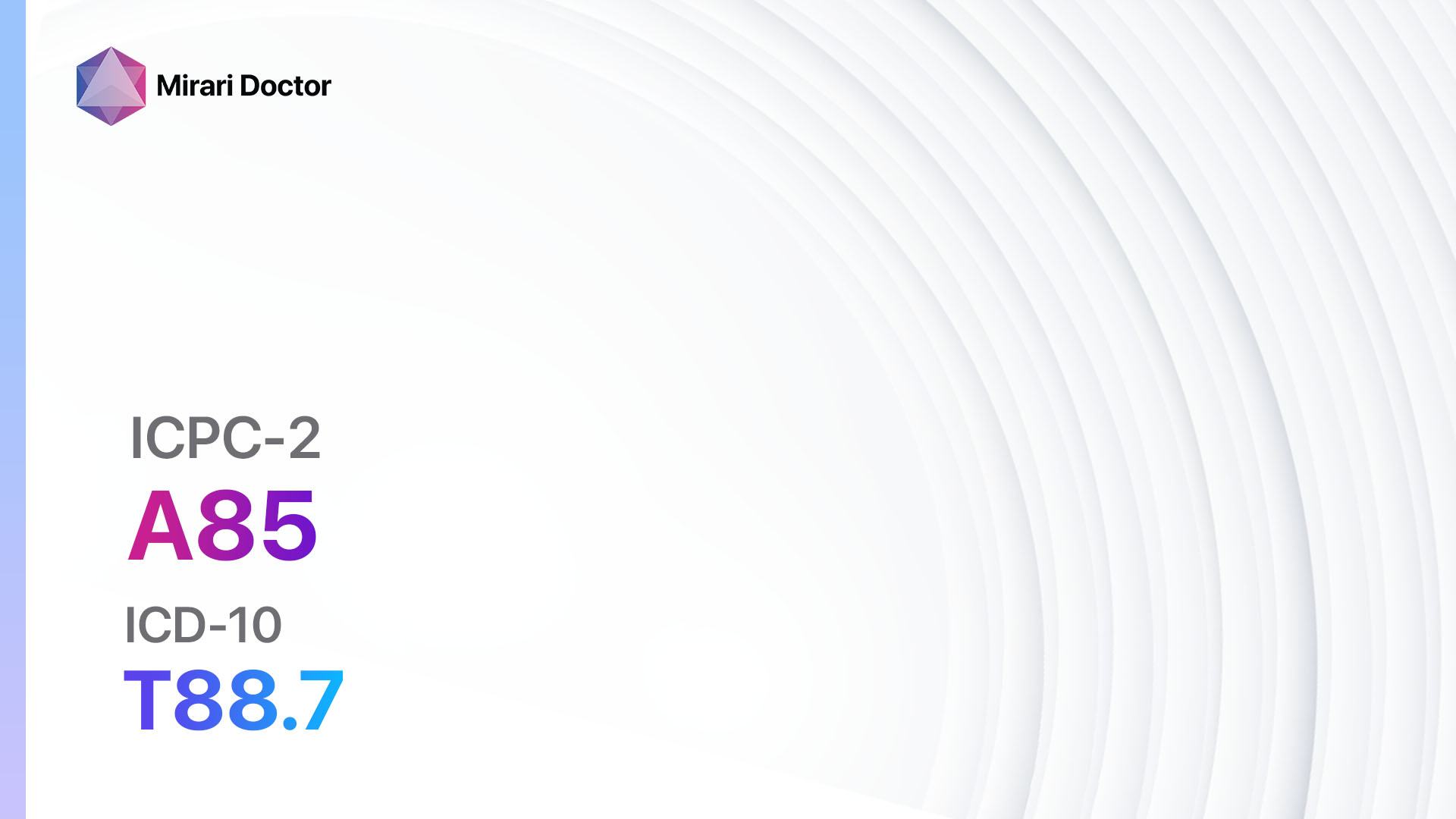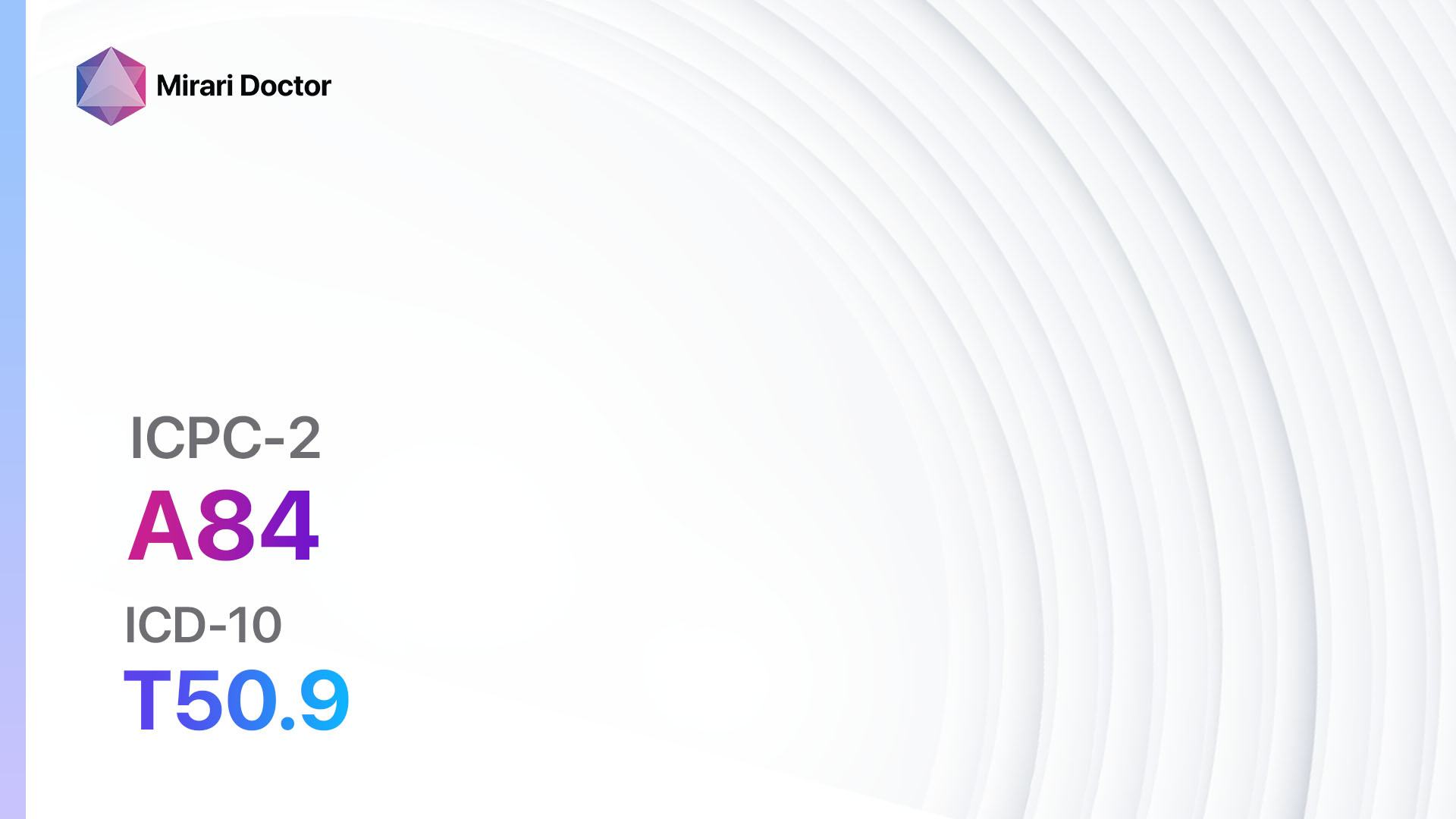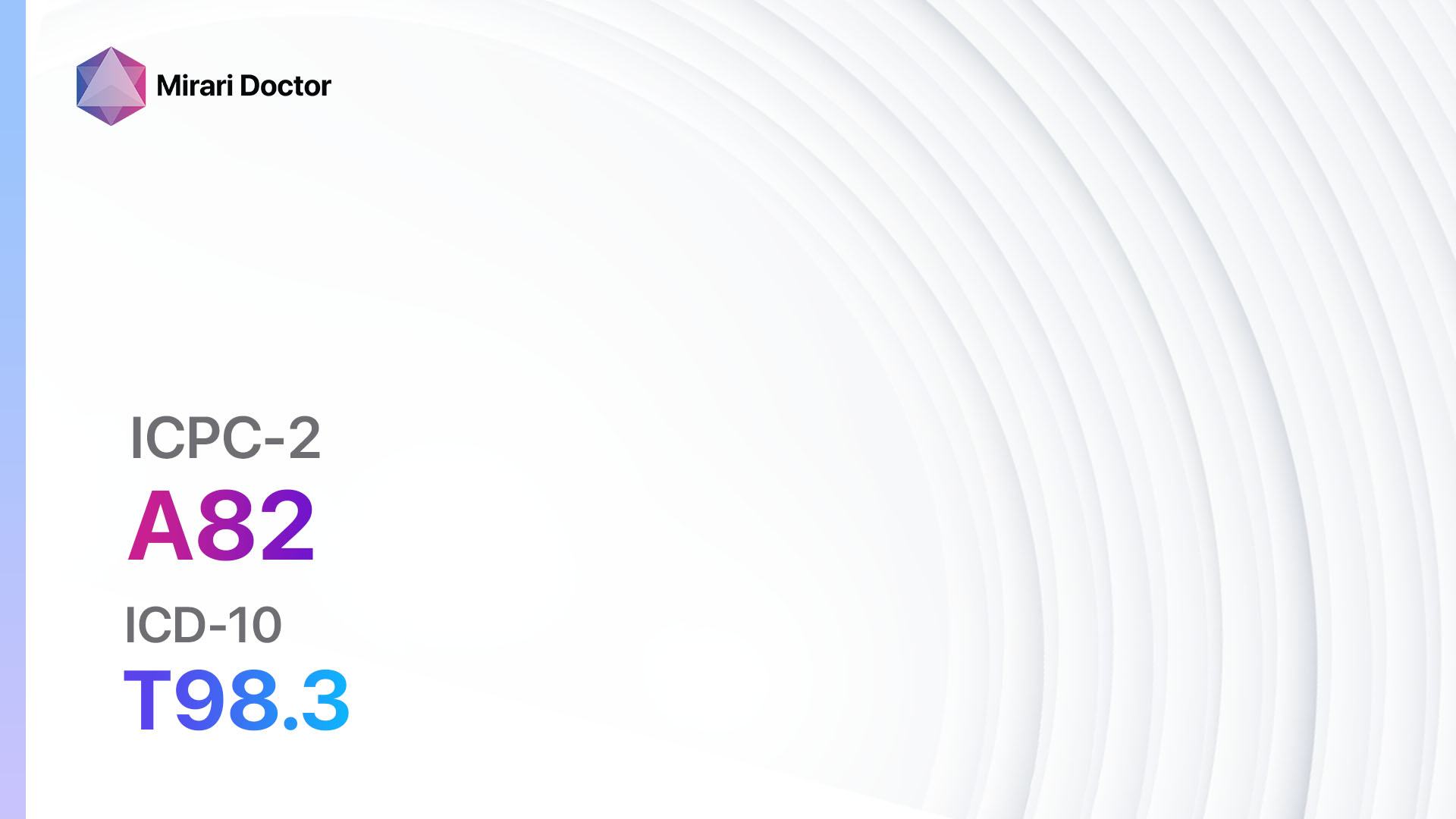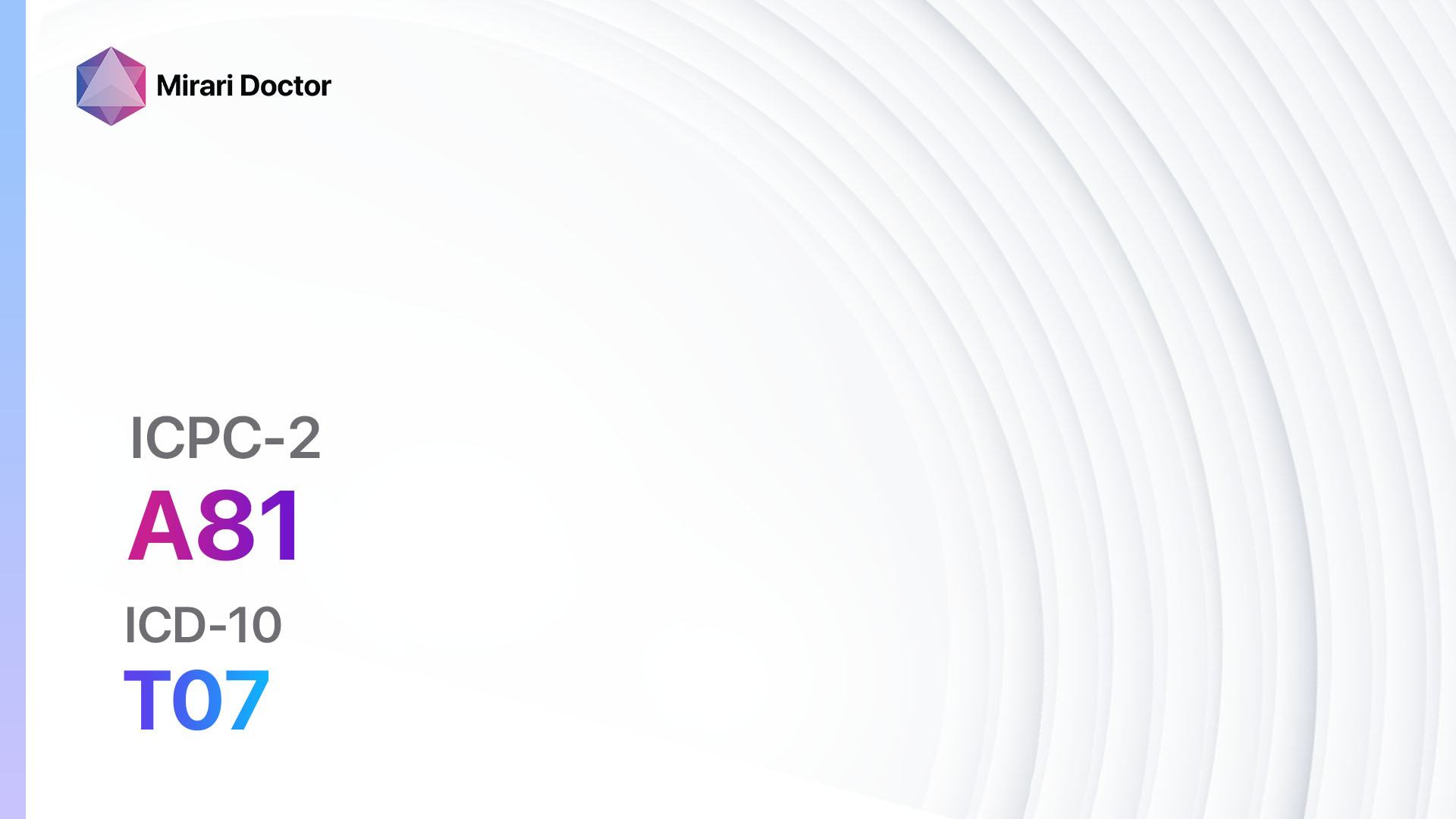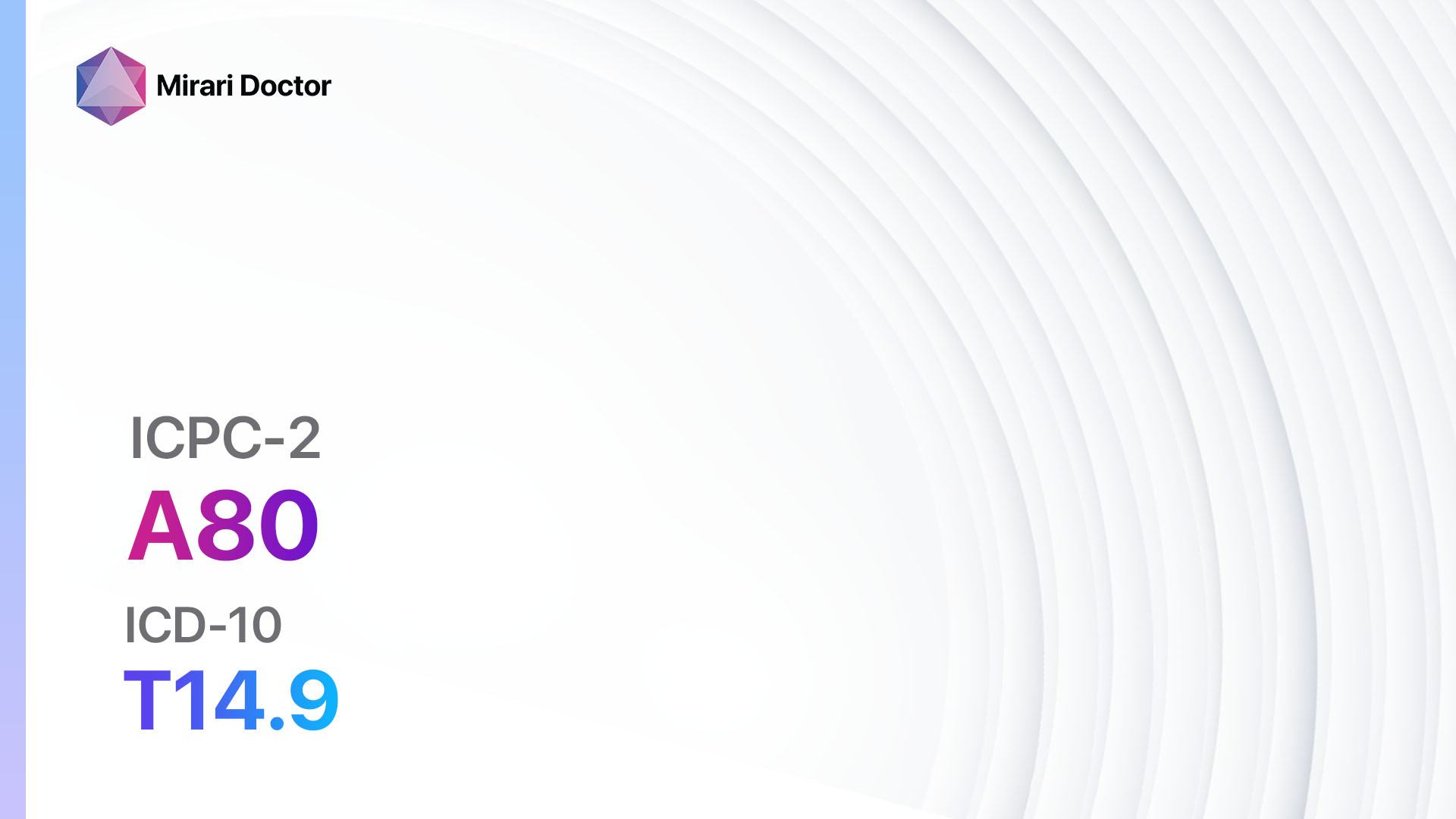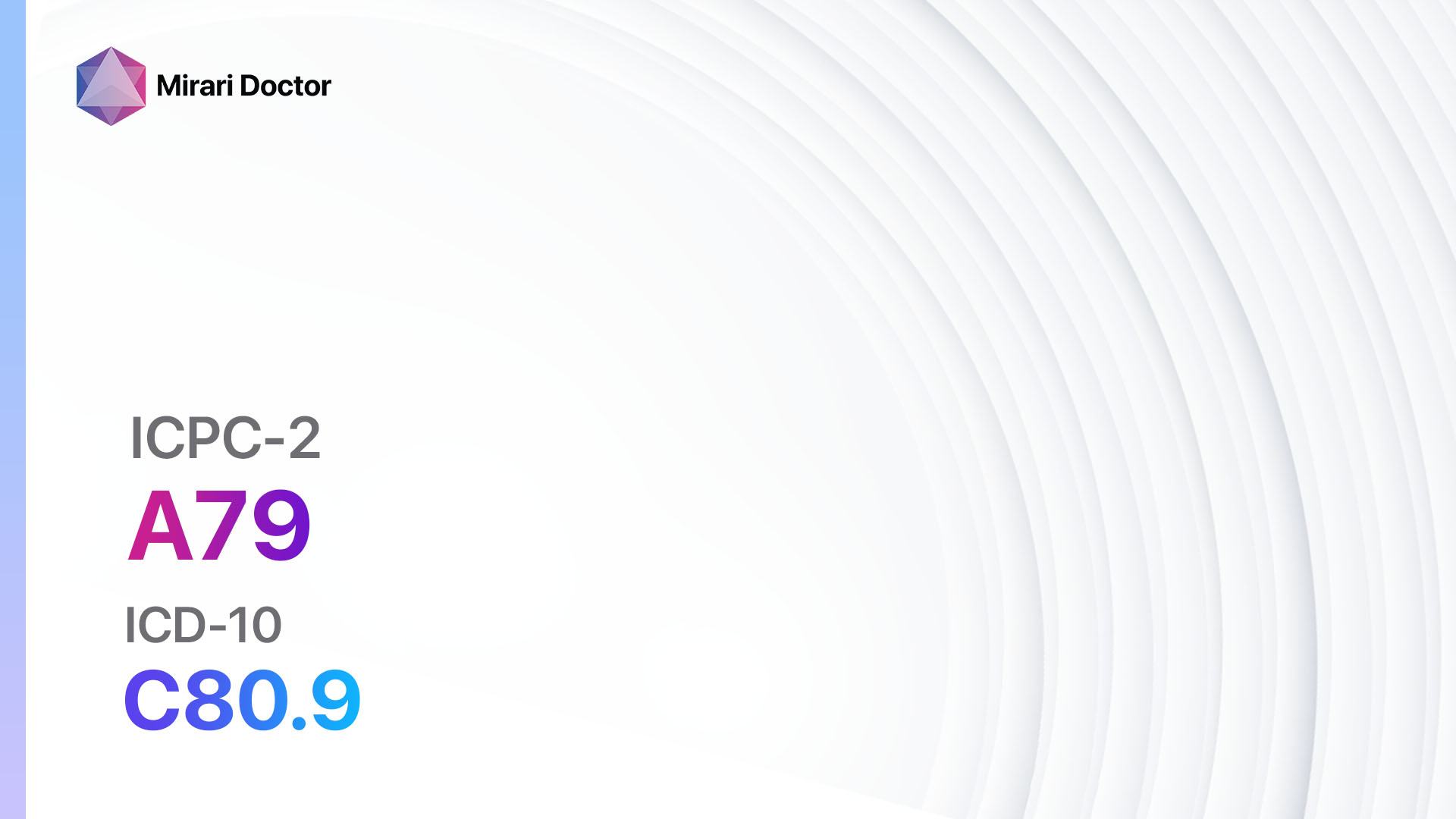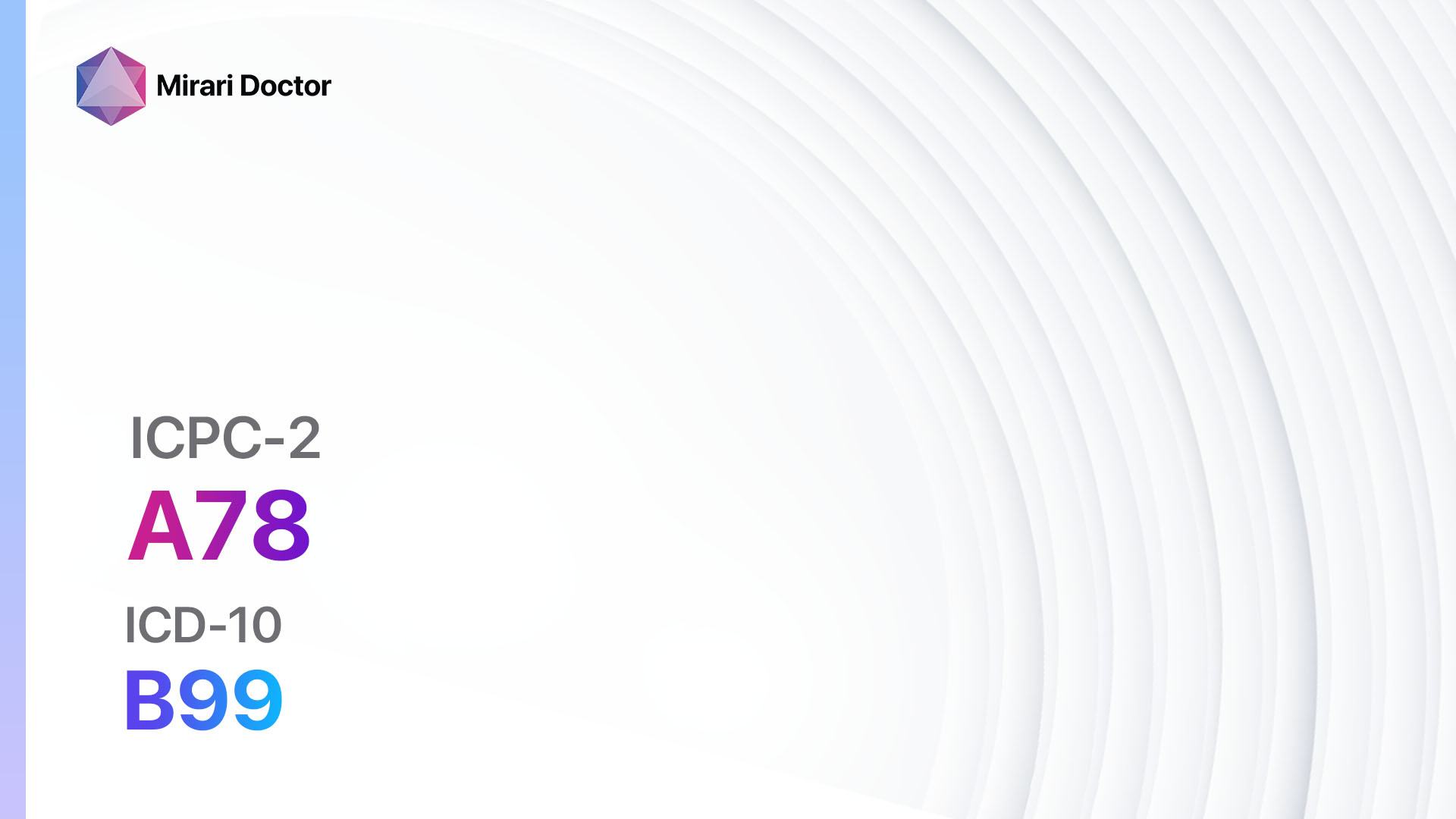
Introduction
Infectious diseases are caused by microorganisms such as bacteria, viruses, fungi, or parasites[1]. This guide aims to provide a comprehensive overview of the diagnosis and possible interventions for infectious diseases that do not fall into specific categories. It will cover symptoms, causes, diagnostic steps, possible interventions, and patient education.
Codes
- ICPC-2 Code: A78 Infectious disease other/NOS
- ICD-10 Code: B99 Other and unspecified infectious diseases
Symptoms
- Fever: Elevated body temperature, often accompanied by chills or sweating[2].
- Fatigue: Feeling tired or exhausted[3].
- Headache: Pain or discomfort in the head[4].
- Muscle aches: Soreness or pain in the muscles[5].
- Cough: A repetitive expulsion of air from the lungs[6].
- Sore throat: Pain or irritation in the throat[7].
- Runny or stuffy nose: Excessive nasal discharge or congestion[8].
- Diarrhea: Loose or watery stools[9].
- Nausea and vomiting: Feeling of sickness and expulsion of stomach contents[10].
- Skin rash: Abnormal changes in the skin’s appearance or texture.
Causes
- Bacteria: Infections caused by bacteria, such as streptococcus or staphylococcus.
- Viruses: Infections caused by viruses, such as influenza or common cold viruses.
- Fungi: Infections caused by fungi, such as candidiasis or ringworm.
- Parasites: Infections caused by parasites, such as malaria or giardiasis.
Diagnostic Steps
Medical History
- Gather information about the patient’s recent travel history, exposure to sick individuals, and any known outbreaks in the area.
- Ask about specific symptoms, their duration, and any associated factors.
- Inquire about the patient’s medical history, including any underlying conditions or immunocompromised status.
Physical Examination
- Perform a thorough physical examination, including vital signs, general appearance, and specific examination of affected body systems.
- Look for signs such as fever, enlarged lymph nodes, skin rashes, or abnormal lung or heart sounds.
Laboratory Tests
- Blood tests: Complete blood count (CBC), blood cultures, and specific serological tests to identify the causative agent.
- Urine tests: Urinalysis and urine culture to detect urinary tract infections or other related conditions.
- Stool tests: Stool culture or examination for parasites to identify gastrointestinal infections.
- Respiratory samples: Nasal swabs, throat swabs, or sputum samples for viral or bacterial respiratory infections.
- Other specialized tests: Depending on the suspected infectious agent, additional tests may be required, such as PCR or antigen tests.
Diagnostic Imaging
- X-rays: Used to visualize abnormalities in the chest, bones, or other affected areas.
- Ultrasound: Helps in identifying fluid collections, abscesses, or organ involvement.
- CT scans: Provides detailed cross-sectional images of the body, useful for identifying deep-seated infections or complications.
- MRIs: Particularly useful for evaluating brain or spinal cord infections.
Other Tests
- Lumbar puncture: Collects cerebrospinal fluid for analysis in suspected central nervous system infections.
- Biopsy: Removal of a small sample of affected tissue for laboratory examination.
- Culture and sensitivity testing: Identifies the causative agent and determines its susceptibility to specific antibiotics or antifungal agents.
Follow-up and Patient Education
- Provide clear instructions for any prescribed medications, including dosage, frequency, and duration.
- Educate the patient about the importance of completing the full course of treatment.
- Advise the patient on infection prevention measures, such as hand hygiene, respiratory etiquette, and safe food handling practices.
- Schedule follow-up appointments to monitor the patient’s progress and adjust treatment if necessary.
Possible Interventions
Traditional Interventions
Medications:
Top 5 drugs for Infectious disease other/NOS:
- Antibiotics (e.g., Amoxicillin, Azithromycin, Ciprofloxacin):
- Cost: Generic versions can range from $3 to $50 per month.
- Contraindications: Allergy to the specific antibiotic, history of severe adverse reactions.
- Side effects: Nausea, diarrhea, rash.
- Severe side effects: Allergic reactions, severe gastrointestinal disturbances.
- Drug interactions: Other medications that may interfere with antibiotic effectiveness.
- Warning: Complete the full course of antibiotics as prescribed.
- Antivirals (e.g., Oseltamivir, Acyclovir, Valacyclovir):
- Cost: Generic versions can range from $10 to $100 per month.
- Contraindications: Allergy to the specific antiviral, severe renal impairment.
- Side effects: Nausea, headache, dizziness.
- Severe side effects: Allergic reactions, neuropsychiatric events.
- Drug interactions: Other medications that may interfere with antiviral effectiveness.
- Warning: Start antiviral treatment as early as possible for maximum benefit.
- Antifungals (e.g., Fluconazole, Terbinafine, Clotrimazole):
- Cost: Generic versions can range from $10 to $50 per month.
- Contraindications: Allergy to the specific antifungal, severe hepatic impairment.
- Side effects: Nausea, abdominal pain, rash.
- Severe side effects: Allergic reactions, hepatotoxicity.
- Drug interactions: Other medications that may interfere with antifungal effectiveness.
- Warning: Follow the prescribed treatment duration to prevent recurrence.
- Antiparasitics (e.g., Metronidazole, Ivermectin, Albendazole):
- Cost: Generic versions can range from $10 to $50 per month.
- Contraindications: Allergy to the specific antiparasitic, pregnancy.
- Side effects: Nausea, vomiting, dizziness.
- Severe side effects: Allergic reactions, neurotoxicity.
- Drug interactions: Other medications that may interfere with antiparasitic effectiveness.
- Warning: Take the medication with food to minimize gastrointestinal side effects.
- Immunomodulators (e.g., Interferon, Tumor necrosis factor inhibitors):
- Cost: Varies depending on the specific medication.
- Contraindications: Allergy to the specific immunomodulator, active infections.
- Side effects: Flu-like symptoms, injection site reactions.
- Severe side effects: Severe infections, autoimmune reactions.
- Drug interactions: Other medications that may interfere with immunomodulator effectiveness.
- Warning: Regular monitoring of blood counts and liver function may be required.
Alternative Drugs:
- Antimalarials (e.g., Chloroquine, Mefloquine): Used for the treatment and prevention of malaria.
- Antihelminthics (e.g., Mebendazole, Praziquantel): Used for the treatment of parasitic worm infections.
- Antiprotozoals (e.g., Metronidazole, Tinidazole): Used for the treatment of protozoal infections.
- Antiretrovirals (e.g., Tenofovir, Efavirenz): Used for the treatment of HIV/AIDS.
- Antifungals (e.g., Amphotericin B, Voriconazole): Used for severe or resistant fungal infections.
Surgical Procedures:
- Surgical drainage: Removal of pus or fluid from an abscess or infected site.
- Debridement: Removal of dead or infected tissue to promote healing.
- Biopsy: Surgical removal of a small sample of affected tissue for laboratory analysis.
Alternative Interventions
- Herbal remedies: Some herbs, such as Echinacea or garlic, are believed to have antimicrobial properties. Cost: Varies depending on the specific herb or supplement.
- Probiotics: Consumption of live bacteria or yeast cultures to promote a healthy gut microbiome. Cost: Varies depending on the specific product.
- Homeopathy: Use of highly diluted substances to stimulate the body’s natural healing response. Cost: Varies depending on the specific treatment.
- Acupuncture: Traditional Chinese medicine technique involving the insertion of thin needles into specific points on the body. Cost: $60-$120 per session.
- Ayurveda: Traditional Indian medicine system that uses herbs, diet, and lifestyle modifications to restore balance and health. Cost: Varies depending on the specific treatment.
Lifestyle Interventions
- Hand hygiene: Regularly washing hands with soap and water or using hand sanitizers.
- Respiratory etiquette: Covering the mouth and nose with a tissue or elbow when coughing or sneezing.
- Safe food handling: Properly cooking and storing food to prevent foodborne illnesses.
- Adequate rest and sleep: Getting enough rest to support the immune system.
- Healthy diet: Consuming a balanced diet rich in fruits, vegetables, and whole grains to support overall health.
- Stress management: Engaging in stress-reducing activities such as exercise, meditation, or yoga.
It is important to note that the cost ranges provided are approximate and may vary depending on the location and availability of the interventions.
Mirari Cold Plasma Alternative Intervention
Understanding Mirari Cold Plasma
- Safe and Non-Invasive Treatment: Mirari Cold Plasma is a safe and non-invasive treatment option for various skin conditions. It does not require incisions, minimizing the risk of scarring, bleeding, or tissue damage.
- Efficient Extraction of Foreign Bodies: Mirari Cold Plasma facilitates the removal of foreign bodies from the skin by degrading and dissociating organic matter, allowing easier access and extraction.
- Pain Reduction and Comfort: Mirari Cold Plasma has a local analgesic effect, providing pain relief during the treatment, making it more comfortable for the patient.
- Reduced Risk of Infection: Mirari Cold Plasma has antimicrobial properties, effectively killing bacteria and reducing the risk of infection.
- Accelerated Healing and Minimal Scarring: Mirari Cold Plasma stimulates wound healing and tissue regeneration, reducing healing time and minimizing the formation of scars.
Mirari Cold Plasma Prescription
Video instructions for using Mirari Cold Plasma Device – A78 Infectious disease other/NOS (ICD-10:B99)
| Mild | Moderate | Severe |
| Mode setting: 1 (Infection) Location: 0 (Localized) Morning: 15 minutes, Evening: 15 minutes |
Mode setting: 1 (Infection) Location: 0 (Localized) Morning: 30 minutes, Lunch: 30 minutes, Evening: 30 minutes |
Mode setting: 1 (Infection) Location: 0 (Localized) Morning: 30 minutes, Lunch: 30 minutes, Evening: 30 minutes |
| Mode setting: 3 (Antiviral Therapy) Location: 0 (Localized) Morning: 15 minutes, Evening: 15 minutes |
Mode setting: 3 (Antiviral Therapy) Location: 0 (Localized) Morning: 30 minutes, Lunch: 30 minutes, Evening: 30 minutes |
Mode setting: 3 (Antiviral Therapy) Location: 0 (Localized) Morning: 30 minutes, Lunch: 30 minutes, Evening: 30 minutes |
| Mode setting: 7 (Immunotherapy) Location: 1 (Sacrum) Morning: 15 minutes, Evening: 15 minutes |
Mode setting: 7 (Immunotherapy) Location: 1 (Sacrum) Morning: 30 minutes, Lunch: 30 minutes, Evening: 30 minutes |
Mode setting: 7 (Immunotherapy) Location: 1 (Sacrum) Morning: 30 minutes, Lunch: 30 minutes, Evening: 30 minutes |
| Mode setting: 7 (Immunotherapy) Location: 7 (Neuro system & ENT) Morning: 15 minutes, Evening: 15 minutes |
Mode setting: 7 (Immunotherapy) Location: 7 (Neuro system & ENT) Morning: 30 minutes, Lunch: 30 minutes, Evening: 30 minutes |
Mode setting: 7 (Immunotherapy) Location: 7 (Neuro system & ENT) Morning: 30 minutes, Lunch: 30 minutes, Evening: 30 minutes |
| Total Morning: 60 minutes approx. $10 USD, Evening: 60 minutes approx. $10 USD |
Total Morning: 120 minutes approx. $20 USD, Lunch: 120 minutes approx. $20 USD, Evening: 120 minutes approx. $20 USD, |
Total Morning: 120 minutes approx. $20 USD, Lunch: 120 minutes approx. $20 USD, Evening: 120 minutes approx. $20 USD, |
| Usual treatment for 7-60 days approx. $140 USD – $1200 USD | Usual treatment for 6-8 weeks approx. $2,520 USD – $3,360 USD |
Usual treatment for 3-6 months approx. $5,400 USD – $10,800 USD
|
 |
|
Use the Mirari Cold Plasma device to treat Infectious disease other/NOS effectively.
WARNING: MIRARI COLD PLASMA IS DESIGNED FOR THE HUMAN BODY WITHOUT ANY ARTIFICIAL OR THIRD PARTY PRODUCTS. USE OF OTHER PRODUCTS IN COMBINATION WITH MIRARI COLD PLASMA MAY CAUSE UNPREDICTABLE EFFECTS, HARM OR INJURY. PLEASE CONSULT A MEDICAL PROFESSIONAL BEFORE COMBINING ANY OTHER PRODUCTS WITH USE OF MIRARI.
Step 1: Cleanse the Skin
- Start by cleaning the affected area of the skin with a gentle cleanser or mild soap and water. Gently pat the area dry with a clean towel.
Step 2: Prepare the Mirari Cold Plasma device
- Ensure that the Mirari Cold Plasma device is fully charged or has fresh batteries as per the manufacturer’s instructions. Make sure the device is clean and in good working condition.
- Switch on the Mirari device using the power button or by following the specific instructions provided with the device.
- Some Mirari devices may have adjustable settings for intensity or treatment duration. Follow the manufacturer’s instructions to select the appropriate settings based on your needs and the recommended guidelines.
Step 3: Apply the Device
- Place the Mirari device in direct contact with the affected area of the skin. Gently glide or hold the device over the skin surface, ensuring even coverage of the area experiencing.
- Slowly move the Mirari device in a circular motion or follow a specific pattern as indicated in the user manual. This helps ensure thorough treatment coverage.
Step 4: Monitor and Assess:
- Keep track of your progress and evaluate the effectiveness of the Mirari device in managing your Infectious disease other/NOS. If you have any concerns or notice any adverse reactions, consult with your health care professional.
Note
This guide is for informational purposes only and should not replace the advice of a medical professional. Always consult with your healthcare provider or a qualified medical professional for personal advice, diagnosis, or treatment. Do not solely rely on the information presented here for decisions about your health. Use of this information is at your own risk. The authors of this guide, nor any associated entities or platforms, are not responsible for any potential adverse effects or outcomes based on the content.
Mirari Cold Plasma System Disclaimer
- Purpose: The Mirari Cold Plasma System is a Class 2 medical device designed for use by trained healthcare professionals. It is registered for use in Thailand and Vietnam. It is not intended for use outside of these locations.
- Informational Use: The content and information provided with the device are for educational and informational purposes only. They are not a substitute for professional medical advice or care.
- Variable Outcomes: While the device is approved for specific uses, individual outcomes can differ. We do not assert or guarantee specific medical outcomes.
- Consultation: Prior to utilizing the device or making decisions based on its content, it is essential to consult with a Certified Mirari Tele-Therapist and your medical healthcare provider regarding specific protocols.
- Liability: By using this device, users are acknowledging and accepting all potential risks. Neither the manufacturer nor the distributor will be held accountable for any adverse reactions, injuries, or damages stemming from its use.
- Geographical Availability: This device has received approval for designated purposes by the Thai and Vietnam FDA. As of now, outside of Thailand and Vietnam, the Mirari Cold Plasma System is not available for purchase or use.
References
- Kramer, L. D. (2023). Overview of Viral Infections. Merck Manual Consumer Version. https://www.merckmanuals.com/home/infections/overview-of-viral-infections/overview-of-viral-infections
- Mayo Clinic. (2021). Fever. https://www.mayoclinic.org/diseases-conditions/fever/symptoms-causes/syc-20352759
- Mayo Clinic. (2021). Fatigue. https://www.mayoclinic.org/symptoms/fatigue/basics/definition/sym-20050894
- Mayo Clinic. (2021). Headache. https://www.mayoclinic.org/symptoms/headache/basics/definition/sym-20050800
- Mayo Clinic. (2021). Muscle pain. https://www.mayoclinic.org/symptoms/muscle-pain/basics/definition/sym-20050866
- Centers for Disease Control and Prevention. (2021). Symptoms of COVID-19. https://www.cdc.gov/coronavirus/2019-ncov/symptoms-testing/symptoms.html
- Mayo Clinic. (2021). Sore throat. https://www.mayoclinic.org/symptoms/sore-throat/basics/definition/sym-20050867
- Mayo Clinic. (2021). Runny nose. https://www.mayoclinic.org/symptoms/runny-nose/basics/definition/sym-20050640
- Mayo Clinic. (2021). Diarrhea. https://www.mayoclinic.org/symptoms/diarrhea/basics/definition/sym-20050926
- Mayo Clinic. (2021). Nausea and vomiting. https://www.mayoclinic.org/symptoms/nausea/basics/definition/sym-20050736
Related articles
Made in USA


